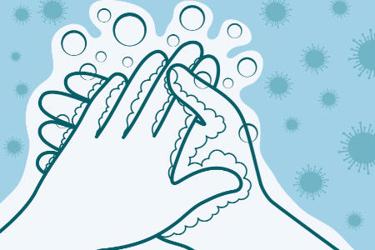Some Americans Are Facing Coronavirus Without Access To Water


For months, the coronavirus and resulting COVID-19 disease have spread around the globe, hospitalizing hundreds of thousands of Americans and disrupting nearly every facet of life across the nation. But there is one segment of the country that has been particularly hard hit by the rise of the pandemic: those who lack access to running water in their homes.
“It’s not clear how many Americans are living without water service in their homes, but a survey conducted in 2016 by Food & Water Watch found that in the nation’s largest cities, 5 percent of households on average had their water shut off that year,” NBC News reported. “If those numbers apply across the country, that would translate to 15 million people.”
Recognizing the issue at a time when citizens are being asked to quarantine at home and frequently wash their hands, many communities are suspending water shutoffs. The governor of Michigan and mayor of Detroit, for instance, announced a plan to limit residents’ payments to $25 per month and defer old debts until after the coronavirus has passed. However, of the more than 400 municipalities and states that have promised to suspend water shutoffs, only 44 have promised to restore water to those who have already lost it, NBC News reported. In the nation’s most populous areas, this could leave many without running water.
“City records show that at least 2,800 Detroit households have no water, although some estimates suggest the number could be higher,” per NBC News. “The city has no way of knowing how many people live in homes without water, because many homes don’t have active accounts with the water department.”
In addition to dense urban areas where coronavirus cases have surged, a lack of water access is affecting more rural areas too. On the Navajo Nation reservation in Arizona, for instance, water access has been an ongoing obstacle that is now particularly daunting.
“Native Americans are 19 times more likely to lack indoor plumbing than white Americans, according to a report published last November by the human-rights group DigDeep … and the nonprofit U.S. Water Alliance,” The Huffington Post reported. “But as confirmed cases of COVID-19 … surged from two to 39 on the reservation this week, the Navajo phrase tó éí ííńá — ‘water is life’ — took on a warped new meaning.”
One Navajo resident, Yazzie, must travel relatively far from home to access water, a typical condition for many Native Americans that seems particularly onerous at a time like this.
“The water source she usually depends on for bathing and washing hands — a habit public health officials cite as a minimum requirement to protect yourself from the virus — is a windmill pump three miles from her home,” according to The Huffington Post. “She drives over and fills a large tank secured to a trailer.”
Of the many issues throughout our society that the spread of coronavirus has brought to new light, the lack of access to running water may be one of the most concerning. Perhaps it’s an issue that we’ll come together to solve as a result of the crisis.
